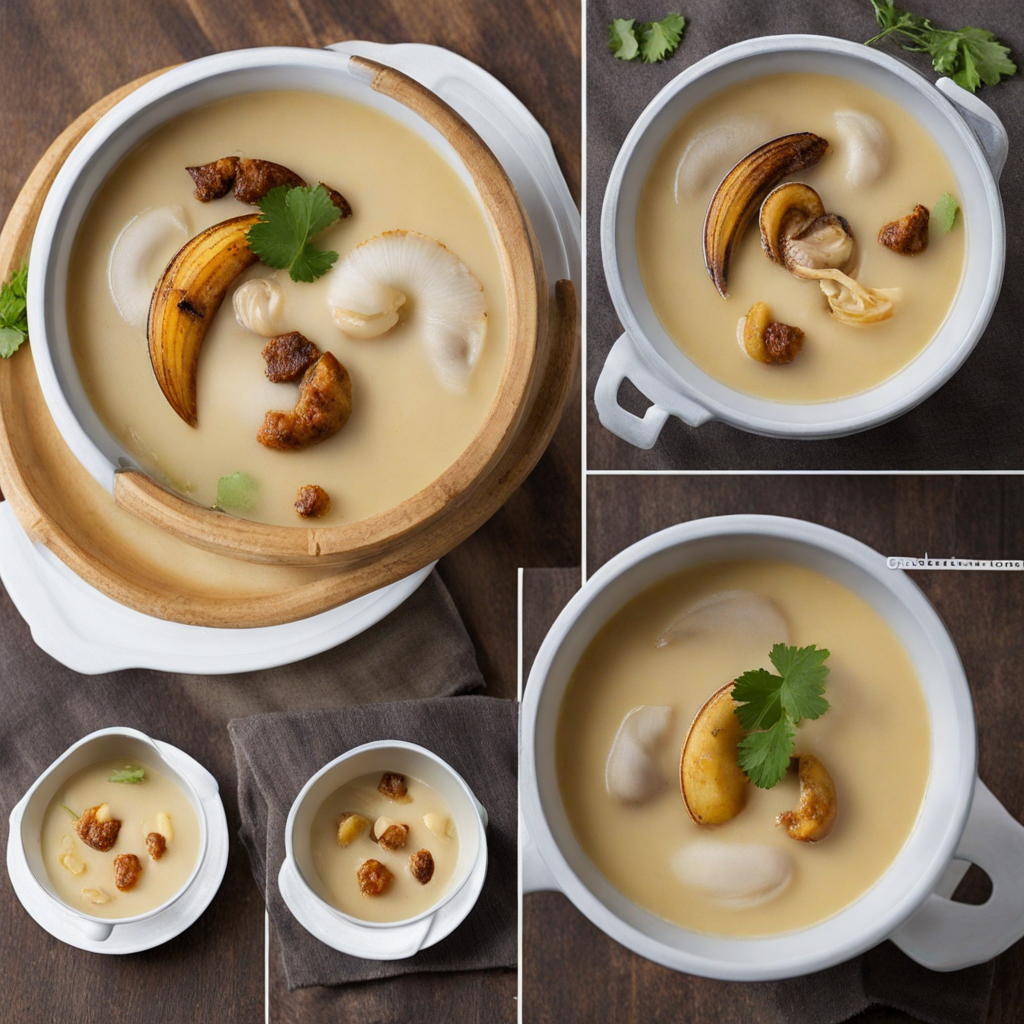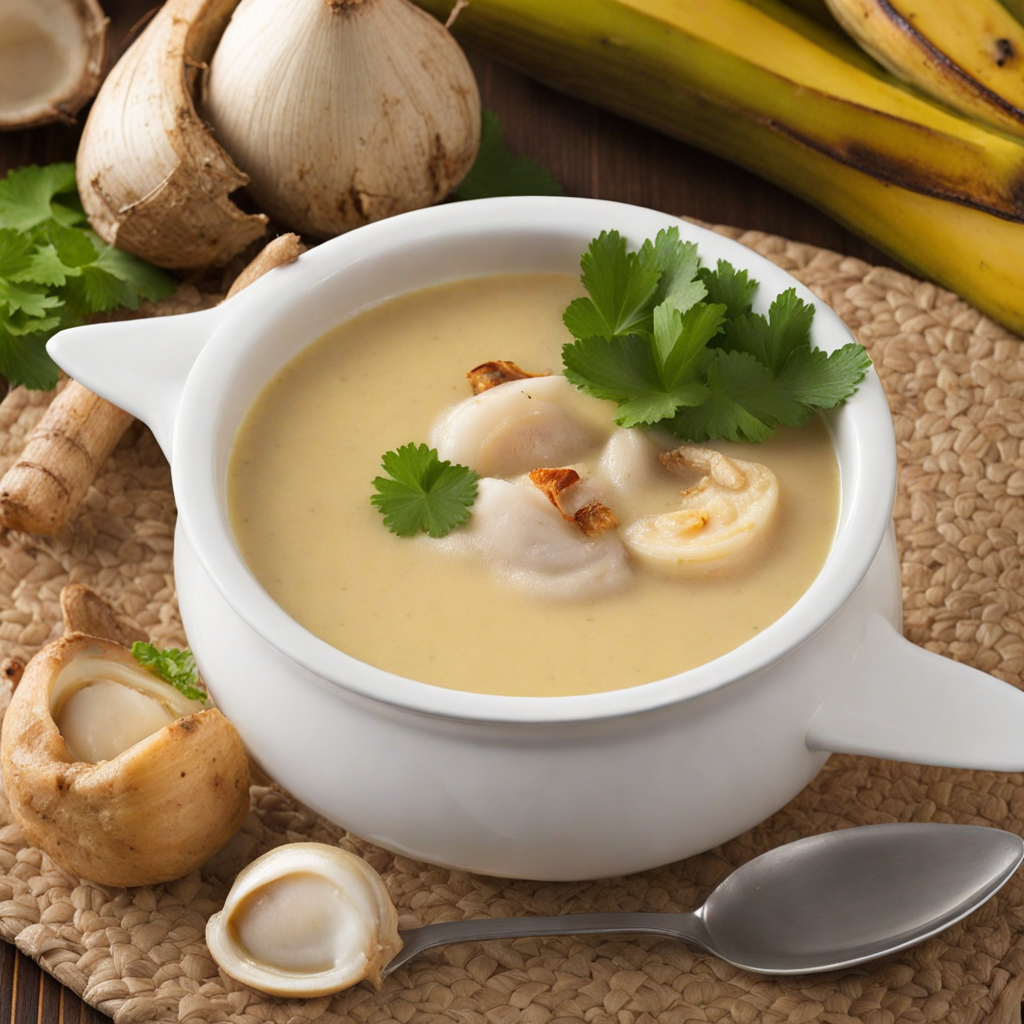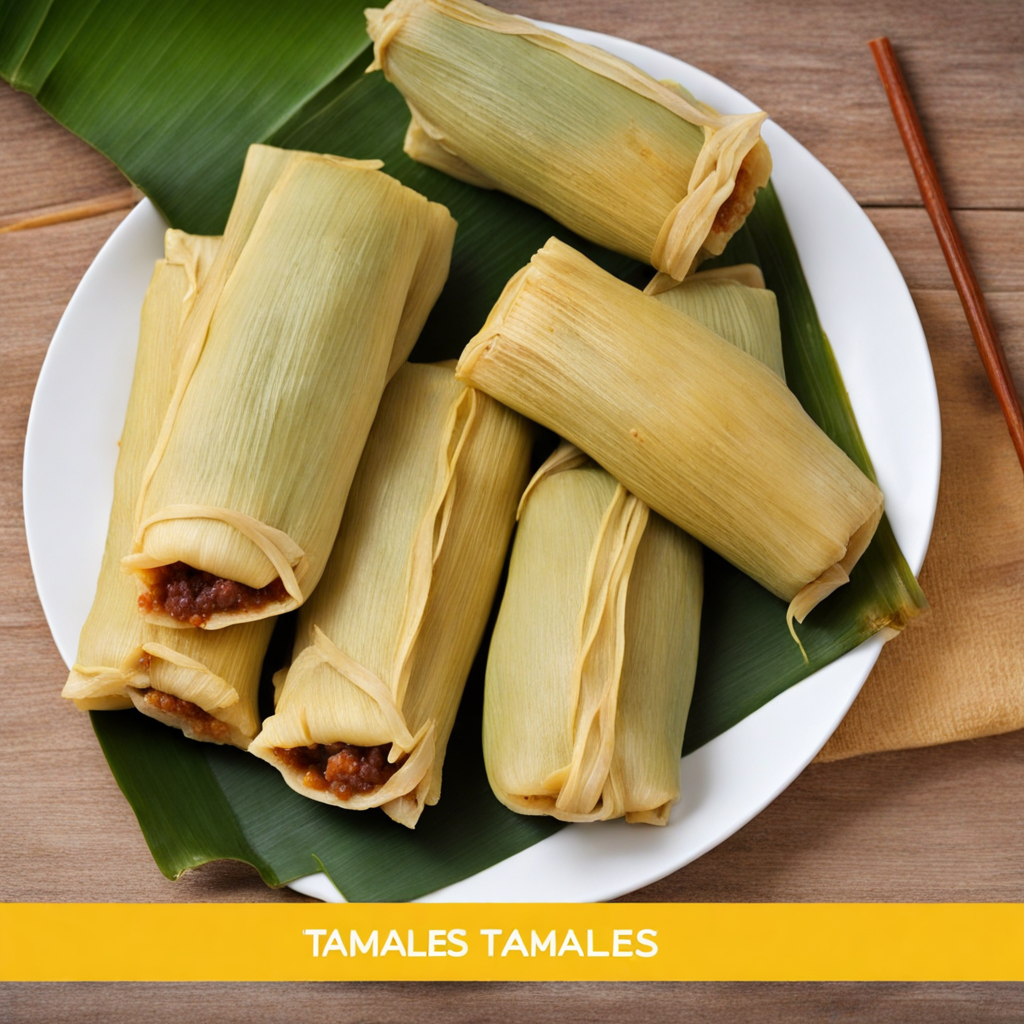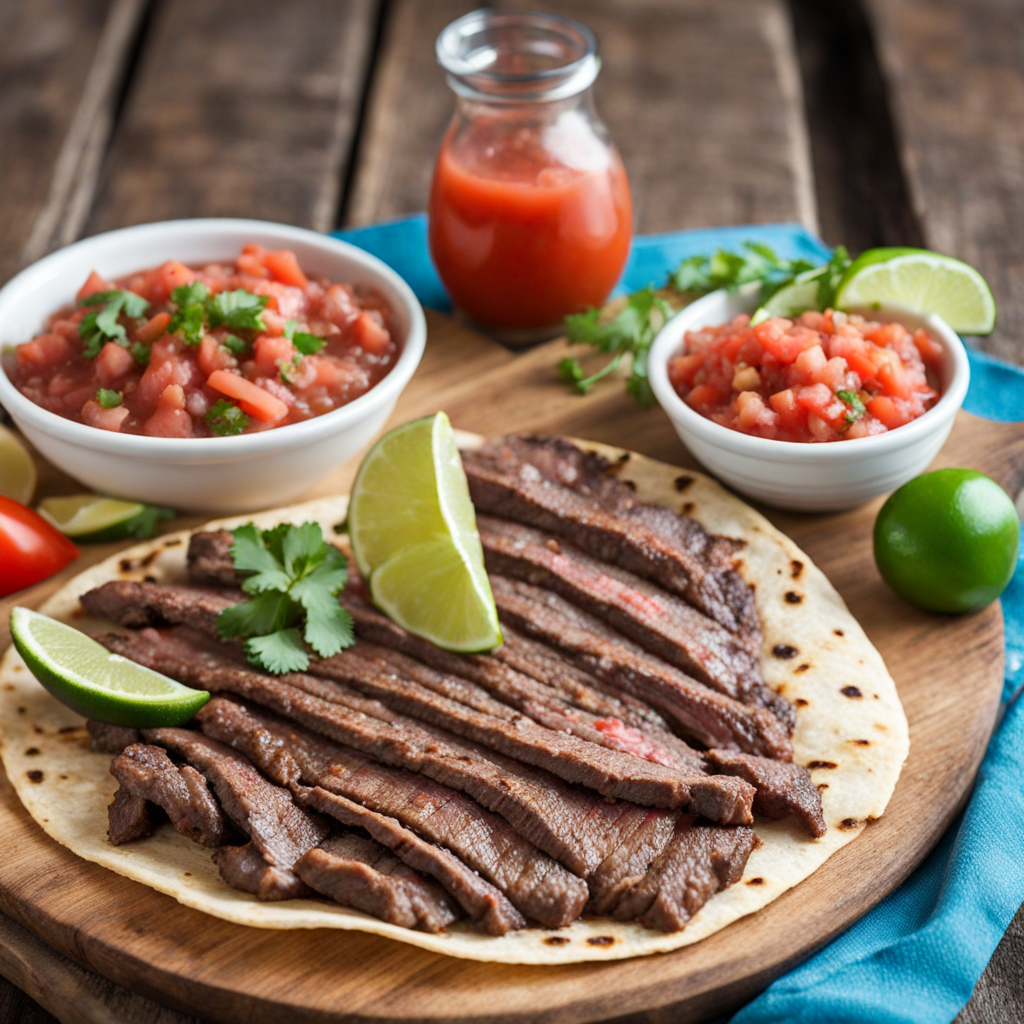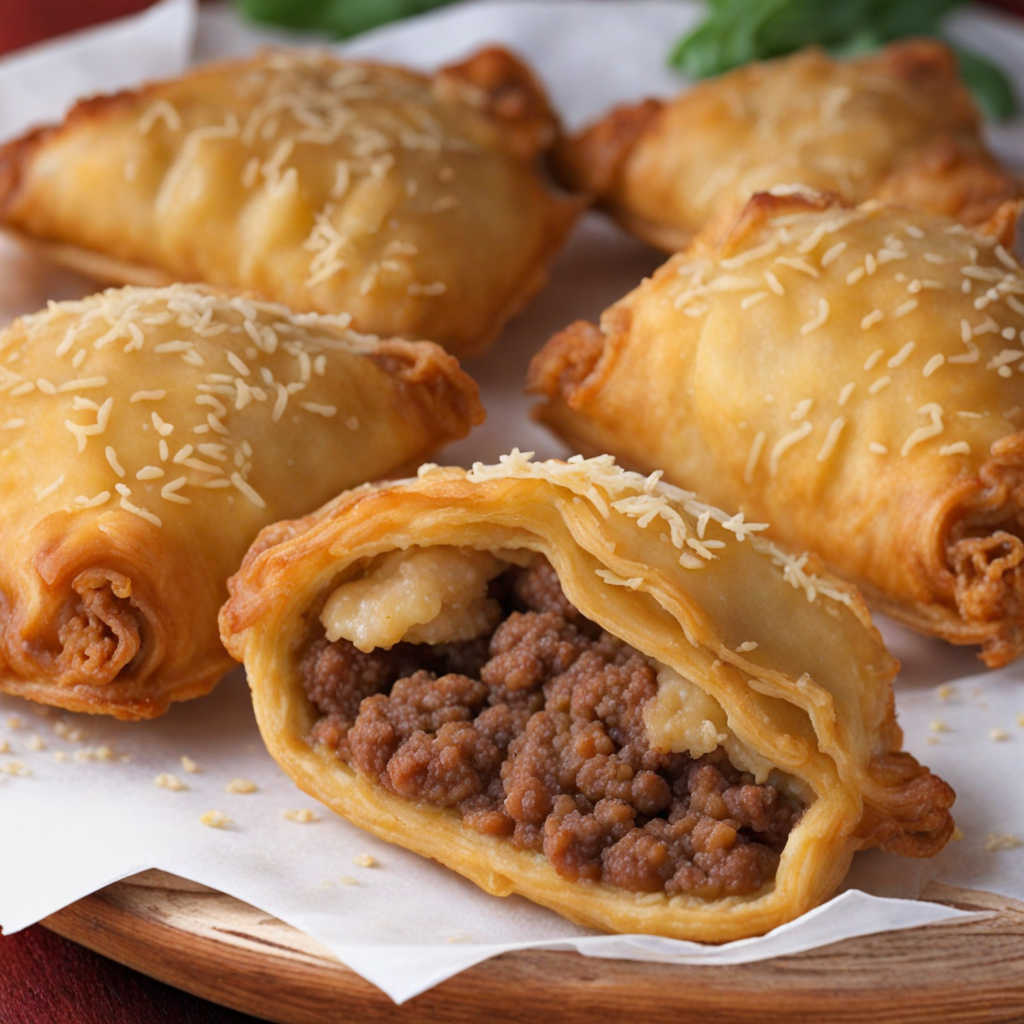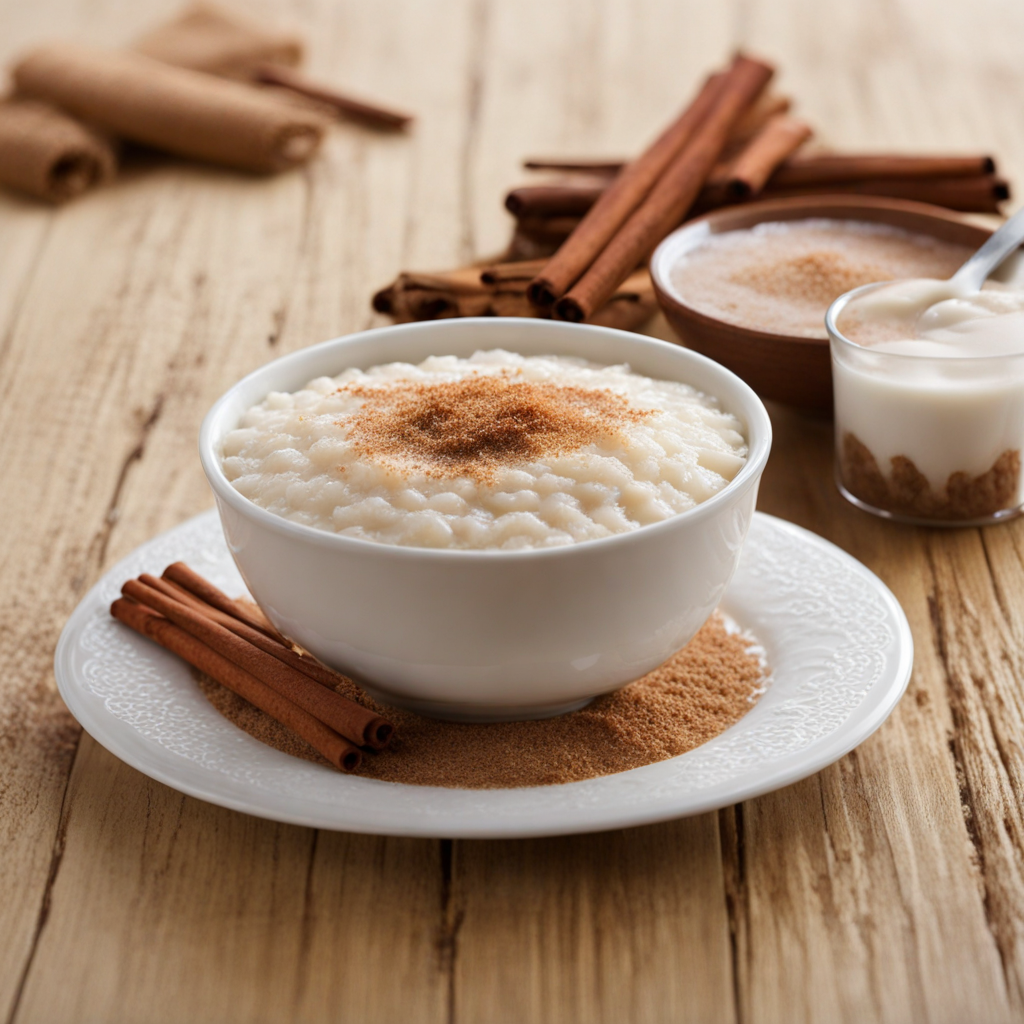Sopa de Caracol
Sopa de Caracol is a vibrant and richly flavored coconut milk soup that hails from the coastal regions of Honduras. At its core, this dish features conch, a type of shellfish known for its tender texture and mildly sweet, briny flavor. The conch is usually diced and simmered to perfection, allowing it to absorb the aromatic spices and ingredients that characterize this beloved Honduran delicacy. The broth, infused with fresh herbs, such as cilantro and parsley, along with the creamy richness of coconut milk, creates a delightful balance of flavors that is both comforting and invigorating. The preparation of Sopa de Caracol involves an array of traditional ingredients that enhance its taste and authenticity. Alongside the conch, you may find vegetables like carrots, bell peppers, and tomatoes, which add color and sweetness to the dish. The use of spices such as garlic, onion, and a touch of lime juice elevates the flavor profile, while achieving a harmonious blend between the natural sweetness of the coconut and the savory notes of the seafood. Each spoonful captures the essence of the Caribbean, making it a truly unique culinary experience. Served hot, Sopa de Caracol is often accompanied by a side of rice and fried plantains, complementing the soup's richness and adding a satisfying texture. This dish not only tantalizes the taste buds but also reflects the vibrant culture and culinary traditions of Honduras. Whether enjoyed as a comforting meal on a rainy day or as a highlight at a festive gathering, Sopa de Caracol promises to offer a delightful journey into the heart of Honduran cuisine, inviting food lovers to savor its distinct and unforgettable flavors.
How It Became This Dish
The Enchanting History of Sopa de Caracol: A Honduran Culinary Treasure Sopa de Caracol, or "Conch Soup," is a delectable dish that encapsulates the vibrant culture and history of Honduras. This savory seafood soup, made primarily with conch, vegetables, and spices, is emblematic of the country's coastal heritage and has become a beloved staple in both local and international cuisine. To fully appreciate Sopa de Caracol, one must delve into its origins, cultural significance, and evolution over time. #### Origins: A Culinary Fusion The story of Sopa de Caracol begins along the Caribbean coast of Honduras, where the warm waters teem with marine life, particularly conch, a mollusk known for its sweet, tender meat. The indigenous Garifuna people, descendants of the Arawaks and Caribs, were among the first to cultivate and utilize conch, integrating it into their traditional diet. The Garifuna culture, with its roots in the Caribbean and Africa, reflects a rich tapestry of culinary practices that laid the groundwork for Sopa de Caracol. As the Spanish colonizers arrived in Central America in the 16th century, they brought their culinary influences, introducing new ingredients such as spices, herbs, and vegetables. This intermingling of cultures and cuisines led to the development of diverse dishes that showcased local ingredients alongside European techniques. Sopa de Caracol emerged from this fusion, combining the indigenous use of conch with the Spanish flair for soups and stews. #### Cultural Significance: A Symbol of Community and Celebration Sopa de Caracol is more than just a dish; it is a symbol of community, celebration, and identity for many Hondurans, especially within the Garifuna culture. Traditionally, this soup is served during communal gatherings, family celebrations, and festive occasions. It embodies the spirit of togetherness, as families and friends come together to enjoy a hearty meal that nourishes both body and soul. The soup's preparation is often a communal affair, with members of the family or community participating in the cooking process. This practice not only strengthens bonds but also preserves culinary traditions that have been passed down through generations. The act of sharing Sopa de Caracol during gatherings reflects the importance of food in fostering relationships and creating memories. Furthermore, Sopa de Caracol carries cultural significance beyond its role in celebrations. It serves as a representation of Garifuna identity and heritage, showcasing the unique flavors and ingredients that define their culinary landscape. The dish has gained recognition as a symbol of Honduran gastronomy, often featured in festivals and cultural events that celebrate the country’s rich history. #### The Development of Sopa de Caracol Over Time As Honduras entered the 20th century, Sopa de Caracol began to gain popularity beyond its coastal roots. The rise of tourism in the Caribbean region brought attention to local cuisine, and Sopa de Caracol became a must-try dish for visitors. Restaurants and eateries started to feature the soup on their menus, adapting it to cater to a broader audience while maintaining its traditional essence. The recipe for Sopa de Caracol varies by region and household, reflecting the diversity of ingredients available and personal preferences. While the core components typically include conch, coconut milk, yuca (cassava), and various vegetables like carrots, bell peppers, and onions, some variations also incorporate spices such as cilantro, garlic, and lime. This adaptability has allowed the dish to evolve while preserving its cultural roots. The global interest in Latin American cuisine, particularly in the 21st century, further propelled Sopa de Caracol into the limelight. Chefs and food enthusiasts around the world began to explore the flavors of Central America, and Sopa de Caracol emerged as a highlight. Its unique combination of textures and flavors made it a favorite among those seeking authentic culinary experiences. Moreover, the rise of social media and food blogging has contributed to the dish's newfound popularity. Images of vibrant bowls of Sopa de Caracol shared online have sparked curiosity and inspired home cooks to replicate the recipe. This digital age has enabled the dish to transcend geographical boundaries, allowing people from different cultures to appreciate and celebrate its rich heritage. #### Contemporary Interpretations and Global Recognition Today, Sopa de Caracol continues to be a beloved dish in Honduras, celebrated for its comforting flavors and cultural significance. In urban areas, you can find variations of the soup in modern restaurants, where chefs experiment with presentation and ingredients while honoring traditional recipes. Some may use shrimp or fish as substitutes for conch, making the dish more accessible to those who may not have access to fresh conch. The soup has also made its mark on the international stage, often featured in culinary festivals and events that celebrate Central American cuisine. It has garnered attention from food critics and enthusiasts alike, who appreciate its rich flavors and cultural background. Sopa de Caracol has even found its way into gourmet cookbooks, highlighting its journey from a humble dish rooted in tradition to a culinary treasure recognized worldwide. #### Conclusion: A Culinary Legacy Sopa de Caracol stands as a testament to the rich history and cultural tapestry of Honduras. From its origins among the Garifuna people to its modern-day recognition as a symbol of Honduran identity, the soup embodies the spirit of community, celebration, and resilience. As it continues to evolve and adapt, Sopa de Caracol remains a cherished dish that connects generations, bridging the past and the present through the universal language of food. In every bowl of Sopa de Caracol, one can taste not only the flavors of the sea but also the stories, traditions, and love that have shaped this remarkable dish. Whether enjoyed at a family gathering, a festive celebration, or a local restaurant, Sopa de Caracol invites all to partake in the rich culinary heritage of Honduras, ensuring that its legacy endures for generations to come.
You may like
Discover local flavors from Honduras


